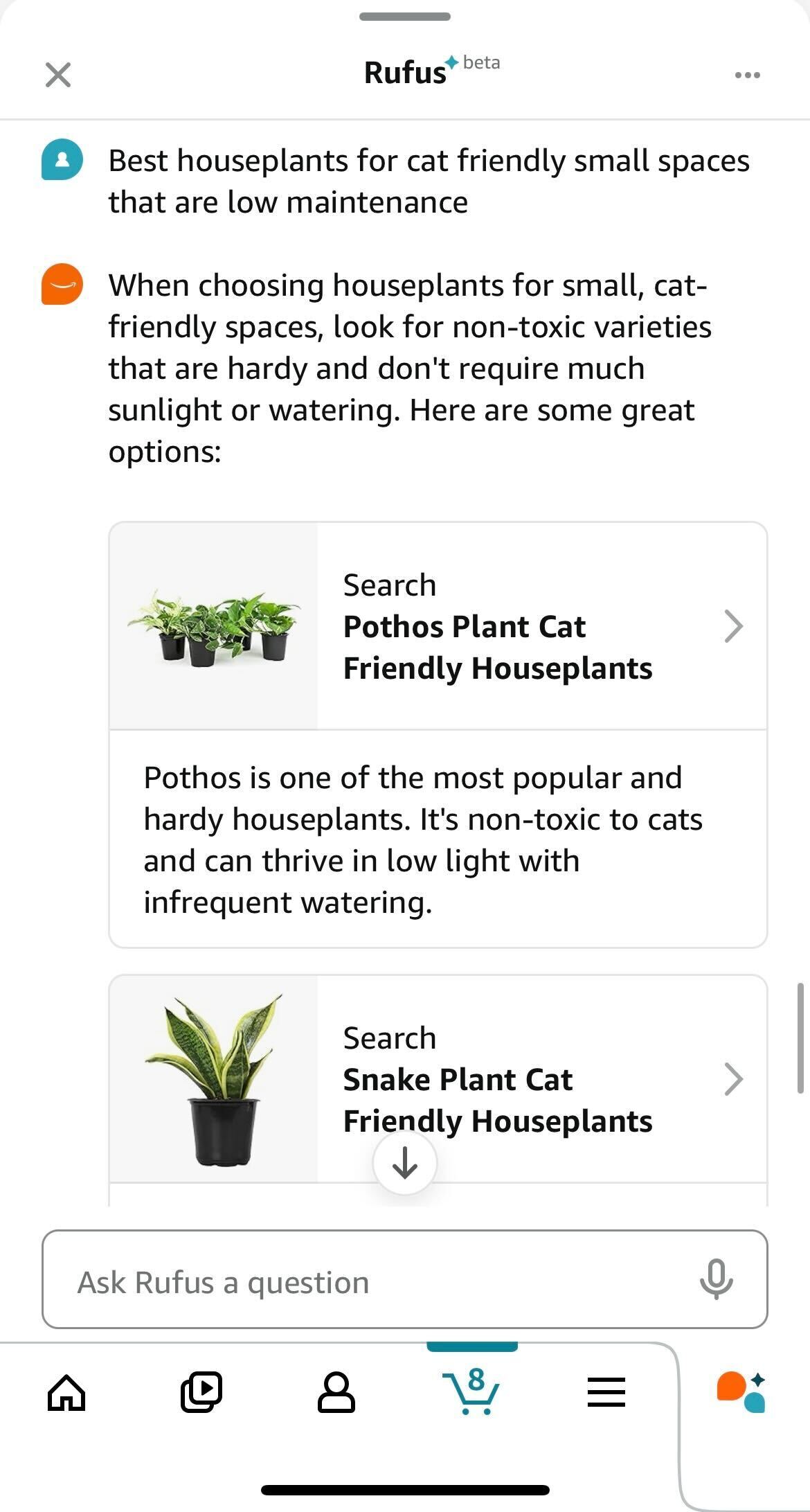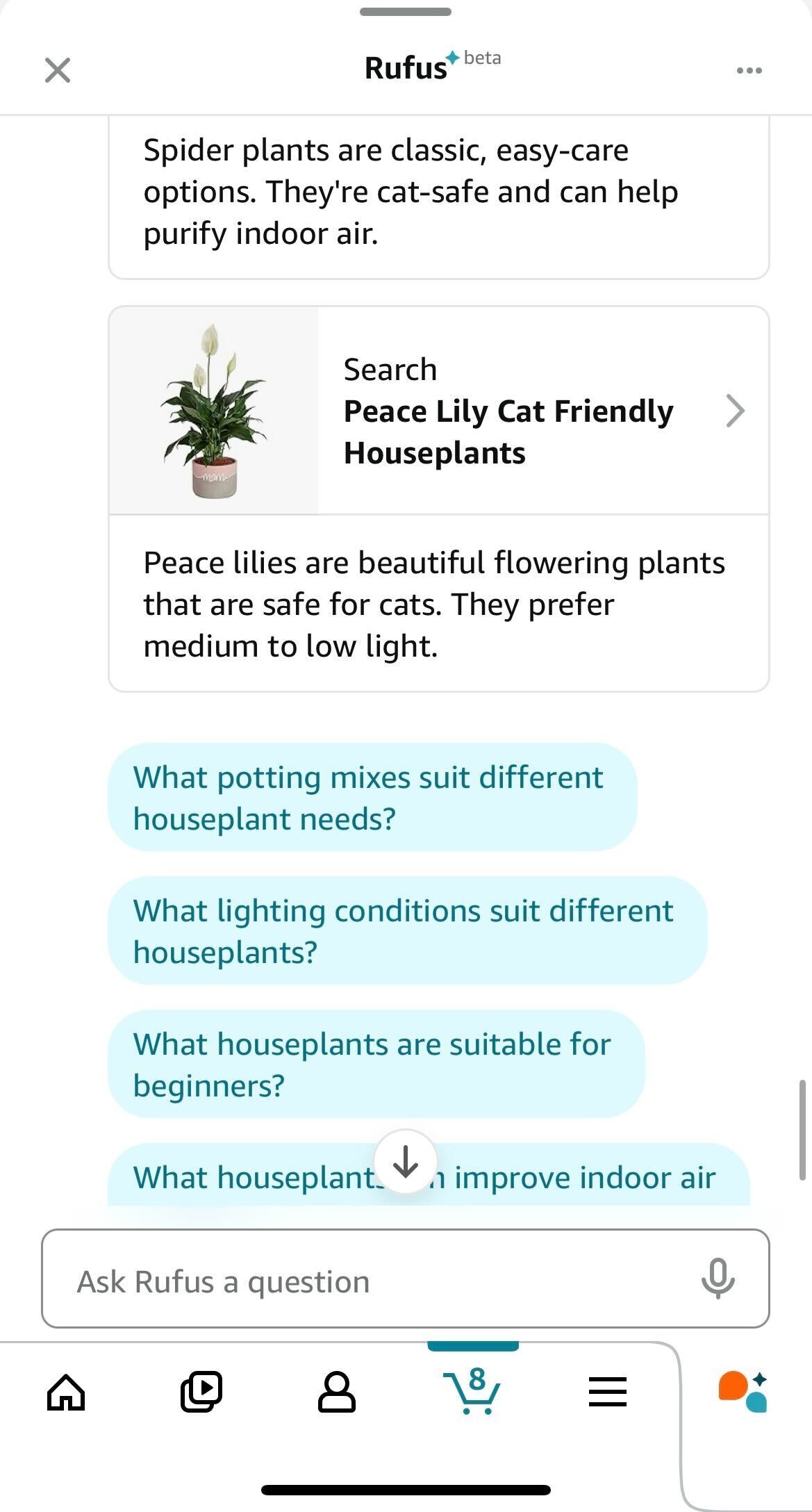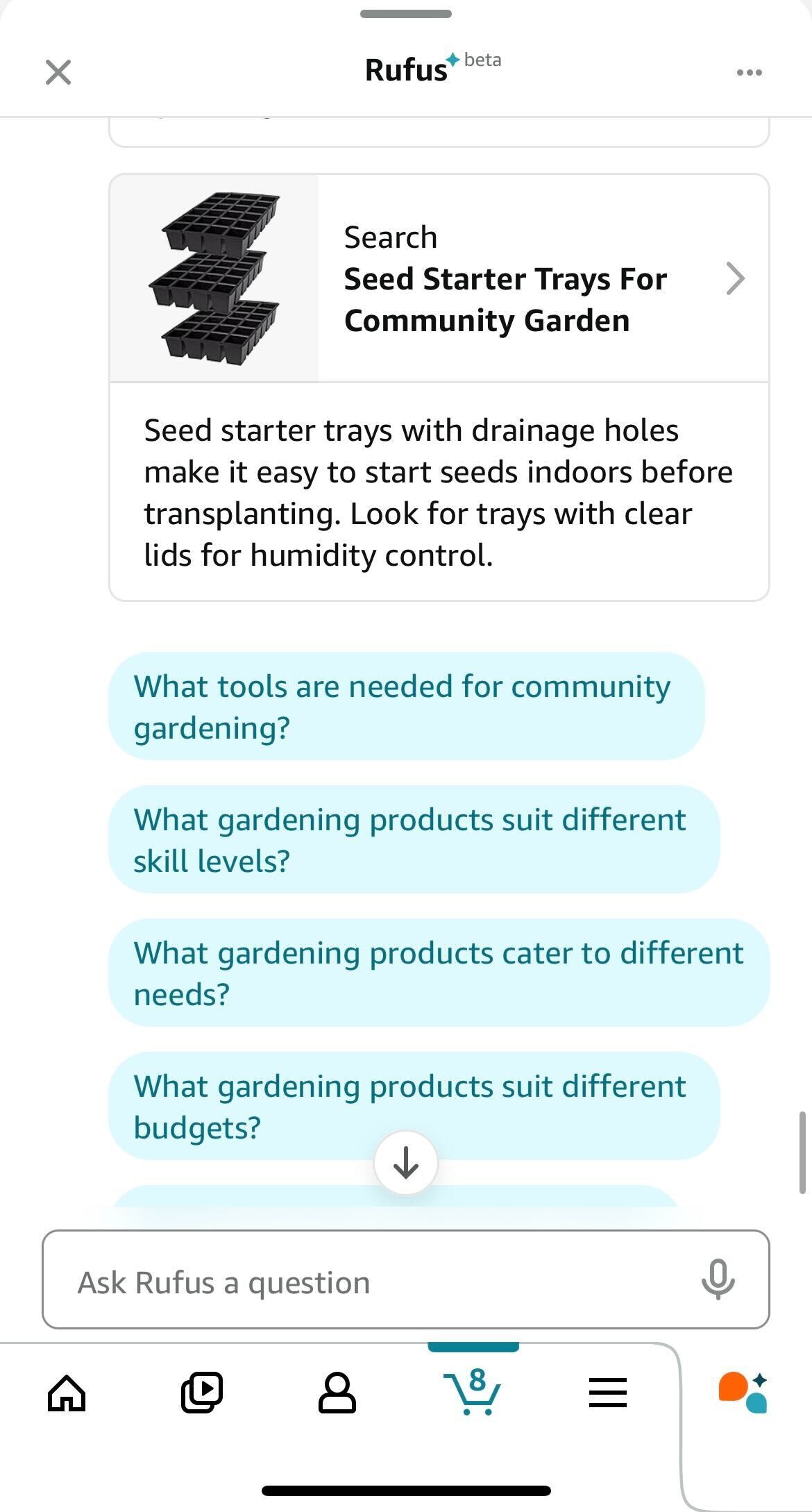Updated: 9/16/2024
And just like that - seven months after the launch of Rufus, Amazon has announced a significant change: brands will soon have the ability to advertise within it. In the near future, sponsored ads in Rufus will be shown based on relevance with users’ intentions (remember what we said here about customer intent being critical these days?! Hate to say we told you so….). Additionally, ads will be shown based on search terms and the context of a customer's conversation with the AI-powered shopping assistant. There’s one glaring limitation, however: advertising campaign reports will not incorporate any metrics from sponsored interaction made within Rufus.
While this is an exciting addition, especially ahead of the critical Q4, Code3 Search and SEO Strategists are aligned with a proceed with caution approach. Without detailed advertising metrics, performance can only be measured via overall impact, which can make optimizations and improvements difficult and doesn’t tell a complete story.
Additionally, sponsored ads within Rufus should have their own specific approach to keywords and bidding strategies. This is because as a new product, Rufus relies heavily on keyword matching, but has proven to be most useful for shoppers when they already have a product in mind that they want to learn more about. With Amazon Accelerate on the horizon, we’re anticipating many new updates on this product and more, and will continue to share what this means for brands.
Original Article Below
---------
Did you know Amazon’s mascot isn’t just a cute face, but a Corgi named Rufus with an impressive resume? We recently learned that Rufus was a pet that belonged to Amazon’s former editor-in-chief and principal engineer who could often be found joining meetings and cruising the hallways. Fast forward to today, Amazon has introduced a new faithful companion, also named Rufus: their conversational shopping companion on Amazon’s mobile app and website.
Rufus isn’t just a friendly name; it’s a generative AI shopping assistant trained on Amazon’s product catalog and information on the web to support customer questions on shopping needs and products. Rufus is set to become an indispensable part of your shopping experience, carrying the name and persona for their next-gen search AI.
How Rufus Works and What it Does
It’s no secret that AI is an integral part of e-commerce, and is becoming more prevalent each day. On Amazon, the launch of Rufus will affect the journey of online shoppers, but will also make the shopping experience more conversational. Most importantly, Rufus will result in more changes to the Amazon search algorithm. While Amazon is not the first platform to have its own shopping assistant, the most significant difference is Amazon has put Rufus front and center on their mobile app and now their website.
One of the Code3 SEO team's favorite qualities about Rufus is asking it what to keep in mind when buying a specific product or category rather than being directed to a specific product listing. Rufus then finds the best recommendations to match the customer’s needs integrated into the same Amazon shopping experience they use regularly. The more context you share with Rufus, the more specific its recommendations can be. Here are some examples:
Question: Best houseplants for cat friendly small spaces that are low maintenance?



Question: What are essential products to start a community garden with a budget of $50?


Providing as many details as possible may help Rufus discover your product in more than one category such as in the examples above. Using the context of what the customer is looking for, Rufus was able to provide product suggestions from different categories and lead us straight to the search page. It helps you find exactly what you need and quickly and easily, based on your specific search and preferences. Unlike traditional search algorithms that rely heavily on keywords and predefined filters, generative AI like Rufus understands the context of user requests and matches them to their needs as closely as possible.
While the generative AI technology is still in its early days, it won’t always get it exactly right; Amazon sellers are concerned about algorithm bias, reduced customer engagement, and loss of control on how items can be perceived by Rufus.
What Should Brands Do About It?
From a brand perspective, optimizing your Amazon product detail pages (PDPs) with Rufus in mind means focusing on both broad and specific aspects of your product listings to improve visibility and conversion rates. Now more than ever it’s important to optimize Amazon’s product detail page with Rufus in mind. Here are a few steps on how to get started:
1. Understand Rufus’s Dual Modes
- SERP Mode: Rufus helps customers by answering broad questions (e.g., "best house plants for small apartments") and displaying top products in response. To improve a chance at inclusion, ensure your product listings include relevant keywords and phrases that match common search queries.
- PDP Mode: Rufus addresses more specific, contextual questions about individual products by pulling information from your product details, reviews, and Q&A sections. Ensure these sections are thorough and address common customer questions.
2. Improve Contextual Relevance
- Keyword Optimization: Use natural language while incorporating a variety of keywords, including long-tail keywords, common misspellings, and different product uses. This helps Rufus understand and display your product effectively.
- Content Quality: Write clear, detailed, and engaging content that highlights features, benefits, common uses, and answers frequently asked questions. Rufus requires high-quality, human-like content to make accurate comparisons.
3. Regularly Review and Update
- Monitor Q&A and Reviews: Regularly check and address questions and concerns in the Q&A and review sections of your listings. This ensures that Rufus has the most up-to-date information to address customer inquiries.
- Optimize Listing Elements: Consistently refine your product title, images, bullet points, and description. This will enhance your product's visibility in SERP and increase the likelihood of conversions.
Following the tips above can help make it a breeze for Rufus to gather all essential details about our products. However, it’s important to remember Rufus is still new and brands can only control so much. While all the right levers can be pulled, the output cannot be guaranteed.
Rufus in SERP is going to disrupt the search experience and while brands included will see an uptick in conversion, brands in general should anticipate some fluctuation in their organic presence and performance. As of now, there is no reporting to know if you are included in Rufus answers, leaving brands in the dark on where and when Rufus answers are leading to an increase in glance views and sales. However, as more shoppers utilize Rufus, Code3 SEO Strategists anticipate the AI Shopping Assistant to iterate and offer new features, including seller analytics.
Key Takeaways
As Amazon sellers leveraging Rufus for research and advertising opportunities, brands can ensure they are at the forefront of this AI- driven revolution by implementing several strategic tactics, including:
- Improved Listing Optimization - Regularly updating keywords and content to ensure product pages rank highly in organic search results.
- Customer Queries: Addressing common customer questions and concerns directly on the product detail pages to enhance the shopping experience and reduce friction.
- Enhanced Product Research - Providing comprehensive product insights and context in both the backend and frontend catalog, making it easier for Rufus to discover and recommend your products.
The challenges that come with Rufus means tougher competition. The sooner brands and sellers adapt and find ways to leverage it to their advantage, the more valuable a tool it can become for everyone involved. The more relevant and helpful your content is, the more likely Rufus will positively impact sales and customer experience. Need help optimizing your Amazon PDP pages? Contact us to see how we can help!

